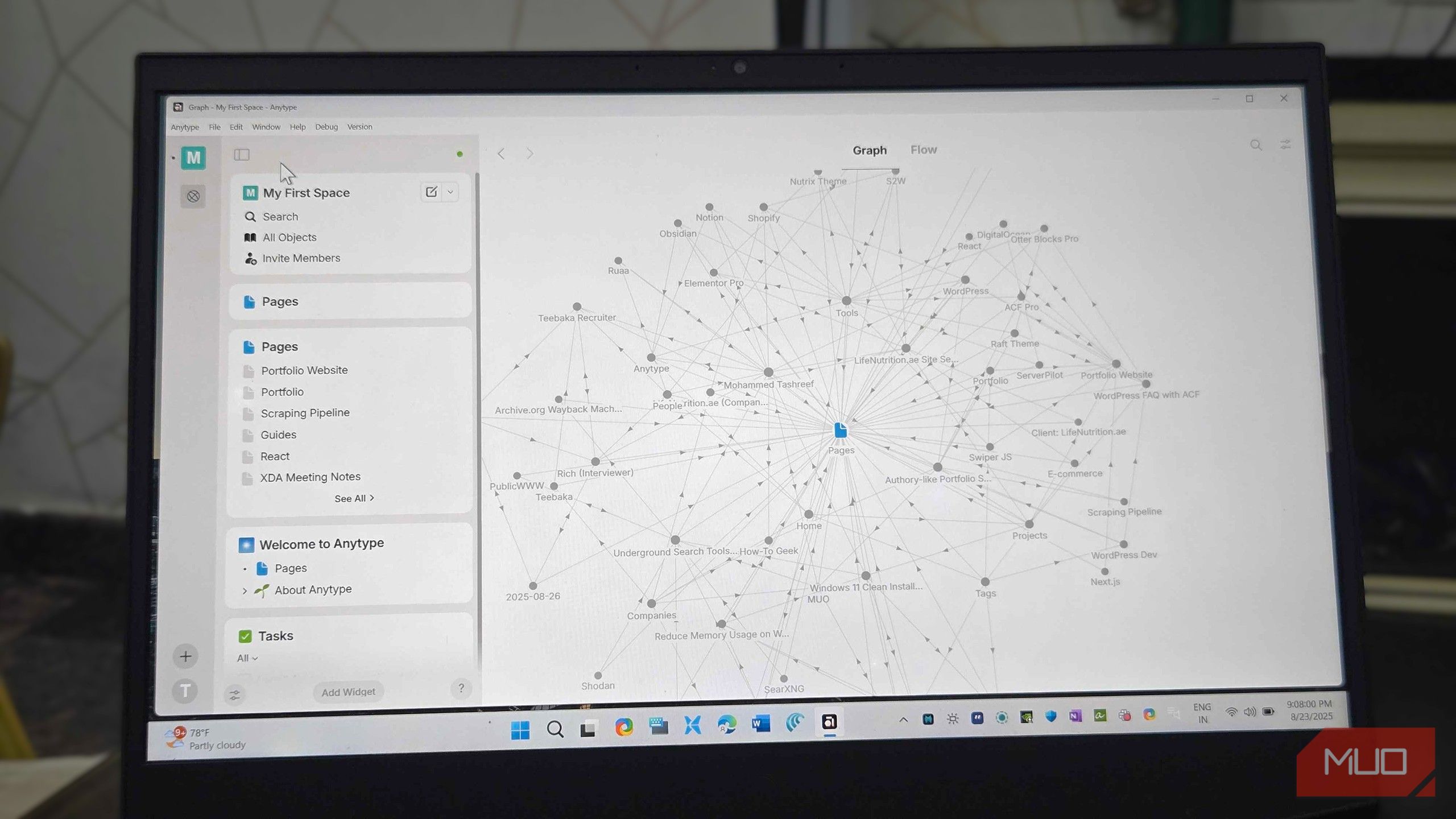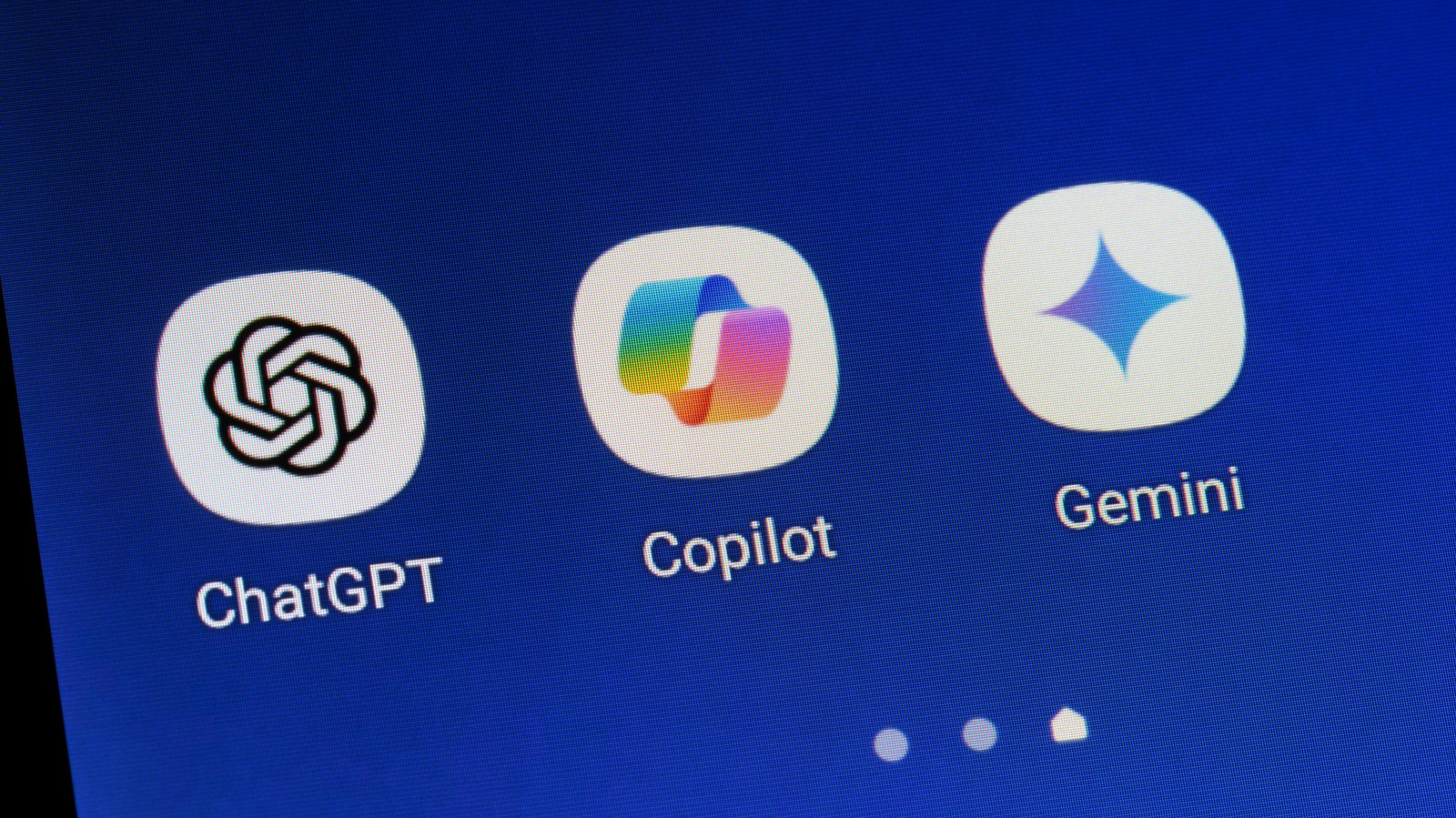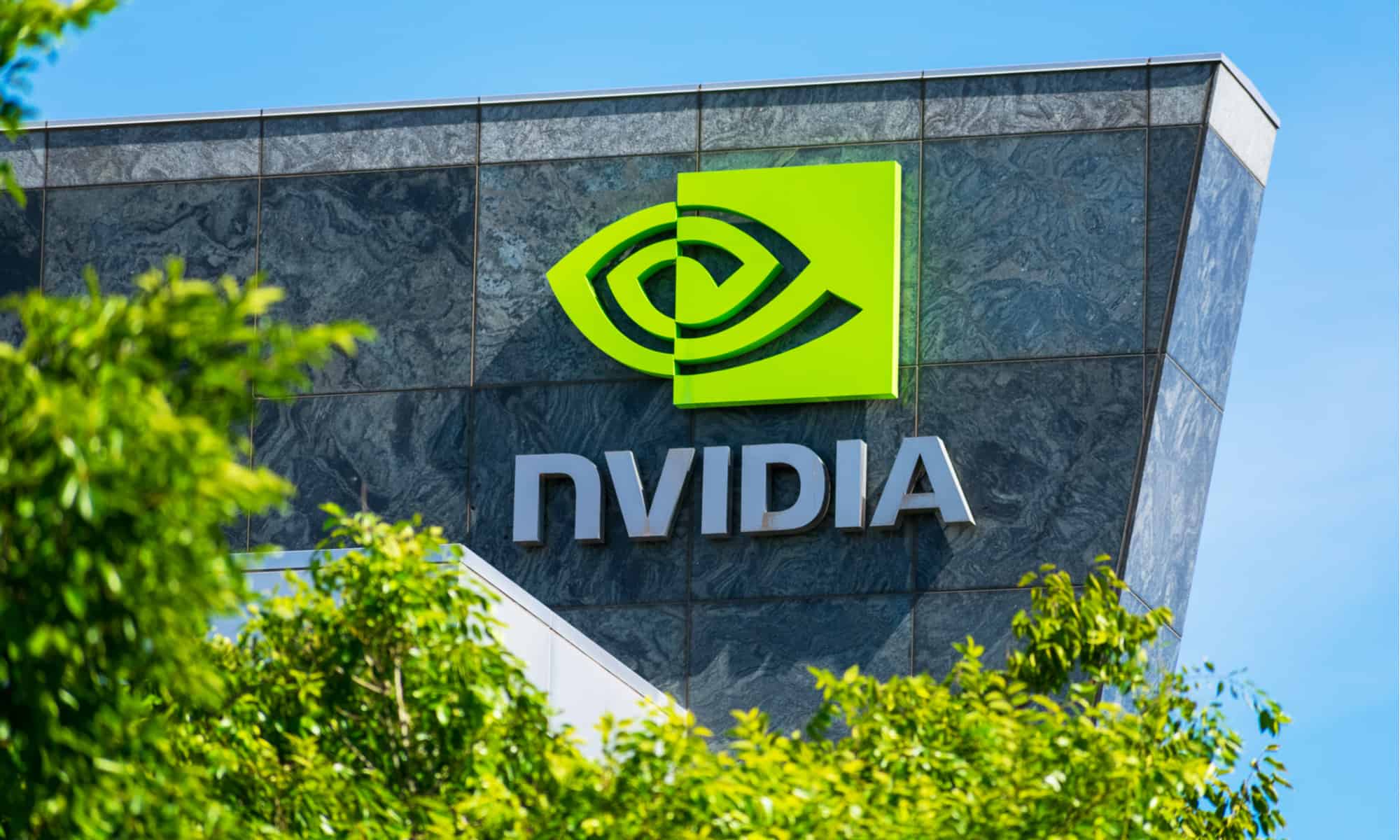I relied on Notion for years until Obsidian won me over with its graph view and offline-first design. Then came AnyType, promising to be the everything app. While that ambition is exciting, it comes wrapped in more complexity than most will ever expect.
6
Anytype Nails Privacy
At a Cost
When you open Anytype, you realize this isn’t another Notion or Obsidian clone with a fresh coat of paint. Everything you create, like notes, tasks, images, and even people, becomes an object that lives on your device first, so that’s a win if you prefer a local-first approach.
All the notes are kept encrypted on your device. And when you want to sync them, Anytype uses peer-to-peer synchronization with end-to-end encryption rather than central servers. Even Anytype can’t read your notes because of the on-device encryption.
The app looks well-designed and resembles Obsidian’s UI a bit, though you’ll instantly miss the tabs. The interface feels modern without being overwhelming. The mindmap view connects your objects visually, showing relationships between ideas in ways that make sense at a glance. Also, instead of setting things up from scratch each time, you can use a template to have consistency across objects.
Anytype also offers shared workspaces for team collaboration. You can create up to three shared spaces on the free plan, each supporting three editors. The paid Builder plan bumps this to 10 editors per space. The difference from Notion is that these spaces maintain end-to-end encryption, so your team’s data stays private even from Anytype itself.
5
Anytype Isn’t the Notion-Killer
It’s Missing the Basics
When you compare Anytype to Notion directly, the first thing you would notice is the lack of third-party app integration. Notion connects to over 8,000 apps through Zapier and direct integrations. You can sync your Google Calendar automatically or save your Slack messages directly in Notion.
Anytype is not big on integration, which the company says has to do with its focus on local-first architecture and end-to-end encryption. Every integration is a potential data leak and could compromise the privacy around which Anytype is built. Even then, the lack of integration can be a deal-breaker if you rely on Notion’s extensive third-party integration.
Notion’s AI features can summarize meeting notes, generate content, and answer questions about your workspace. Anytype offers no AI assistance because that would require sending your data somewhere for processing. Again, the privacy-first approach creates a feature desert where Notion has an oasis.
Despite a decent collaboration workspace feature in the free plan, Notion beats Anytype by the sheer number of collaboration features it offers. In Notion, you can comment on specific blocks, mention teammates, assign tasks, and watch changes happen in real-time.
In comparison, Anytype’s collaboration feels basic. You’re limited to three editors per space on the free plan, and 10 on the Builder plan. The real-time sync exists, but the collaborative features that make Notion a team powerhouse haven’t made their way to Anytype yet.
4
Anytype Wants to Be Obsidian
But Can’t Match Its Power
One might think Anytype would fare better against Obsidian since both prioritize local storage, user control, and privacy. Despite the similarities, these two have different use cases.
If Notion has its integration, Obsidian thrives with its extensive plugin repository. With over 2,000 community plugins, you can turn Obsidian into a writing tool, a task manager, a calendar system, even a basic CRM. Yes, setting up plugins is a chore in itself, but once configured, Obsidian becomes uniquely yours.
On paper, Anytype’s object-based system should be more potent than Obsidian’s markdown files. This is because Objects can have properties, relations, and types that markdown can’t match. But without plugins to extend functionalities, you’re stuck with what Anytype gives you out of the box.
Weirdly enough, this skeletal framework is also AnyType’s biggest appeal for many. It works the way it does without you having to fiddle with your plugins or third-party apps consistently.
Obsidian’s graph view is often criticized for being more pretty than practical. Still, at least it shows genuine connections between your notes based on the links you’ve created. Anytype’s mindmap view looks slicker but feels less organic. It shows relationships between objects, but I prefer Obsidian’s graph view more.
3
Free on Paper
Pricey Once You Need Storage
Obsidian costs nothing, even if you want to use it in a commercial setup. Absolutely free, no storage limits, no feature restrictions. But you can support their efforts through donations and optional licenses.
Anytype’s free tier gives you a meagre 100MB of network storage for backup, plus unlimited local storage and peer-to-peer sync between your devices. P2P sync means you can sync directly between your phone and laptop without using cloud storage—even after hitting the 100MB limit. It’s clever, but less convenient than Obsidian’s flexibility.
With Obsidian, you can use their $4 per month sync service, or sync your notes across devices for free using iCloud, Dropbox, or Google Drive. While some still choose to pay for Obsidian Sync for its convenience, you’re not locked in. With Anytype, when you need cloud backup beyond that 1GB, you’re looking at $10 per month or $96 per year for the Builder plan with 128GB of storage.
2
Anytype’s Learning Curve
Simple Notes Become Workflows
Both Notion and Obsidian have a learning curve, but Anytype takes it a notch higher. The good thing is that Anytype has fixed some of the terminology confusion in the latest releases by renaming Sets to Queries and Relations to Properties to better reflect their functions, but the underlying complexity remains.
If you’re not already familiar with note-taking or personal knowledge management (PKM) concepts, adapting to Anytype may be particularly challenging. Even for someone experienced with productivity and note-taking apps, it took multiple attempts to figure out a workflow that made sense.
Anytype doesn’t let you just jot things down. Even a meeting note means choosing whether it’s a Note or a Meeting object, then linking each attendee as a Person. Tasks bring the same choice: stand-alone objects or properties inside a Project. This system works once you adapt, but it adds extra steps that make simple notes feel complicated.
1
Who’s AnyType For?
Too Unique for Its Own Good
When I switched from Notion to Obsidian, I made a conscious decision to learn it well. My vault has over 800 notes, a few plugins, and workflows that feel natural. Switching to Anytype would require starting from scratch with fewer tools and more complexity. The privacy benefits are real, but privacy alone isn’t worth abandoning a system that works.
For someone starting fresh, without existing workflows or data to migrate, Anytype might make sense. If you value privacy above all else and don’t need integrations, it could be your answer.
The app does exactly what it promises by combining Notion’s collaborative workspace with Obsidian’s local-first personal knowledge base. But in trying to be the best of both worlds, it creates a tool so unique that you’ll find it convoluted.
I’m staying with Obsidian. Anytype delivers on its promises, but those promises solve problems I don’t have while creating new ones I don’t want. Being different isn’t enough when you must spend lots of time relearning things for little benefit. Perhaps, it’s too unique for its own good.
















